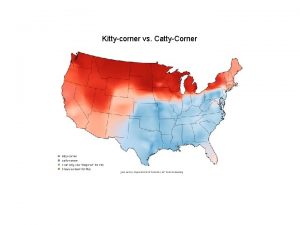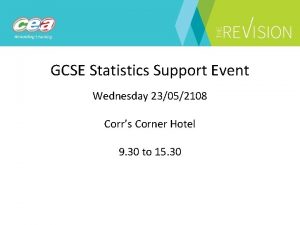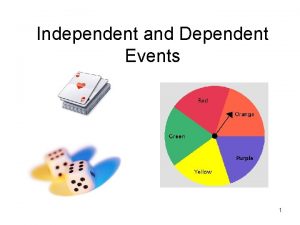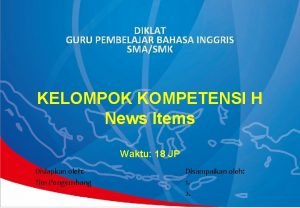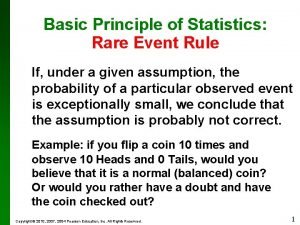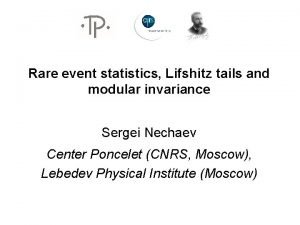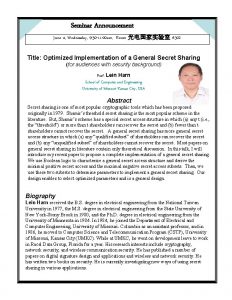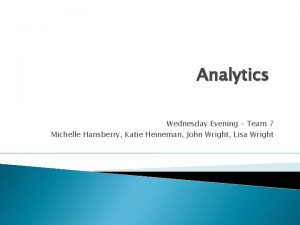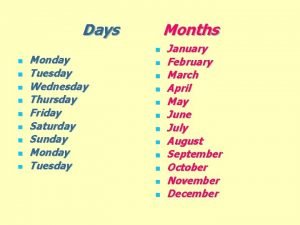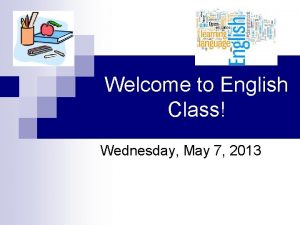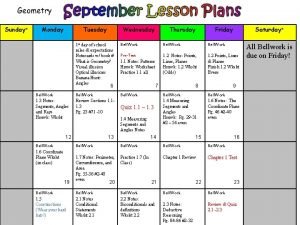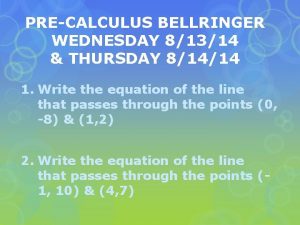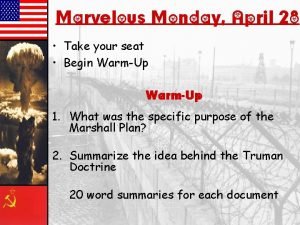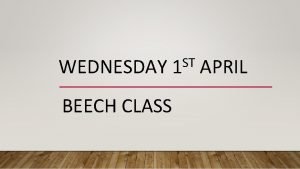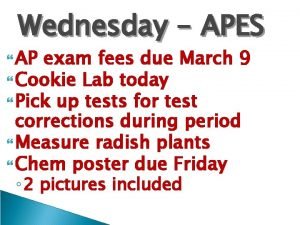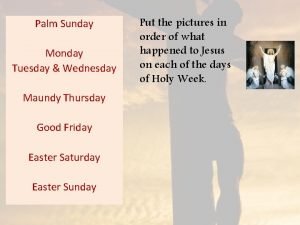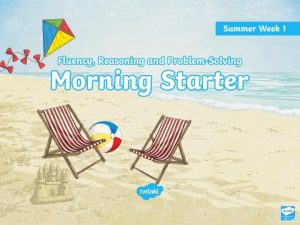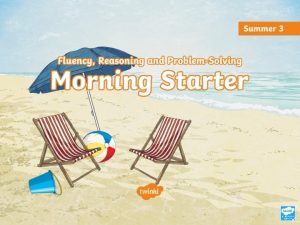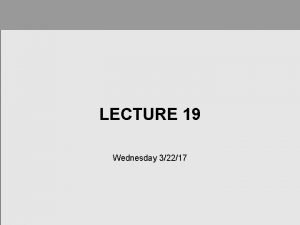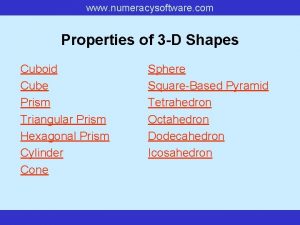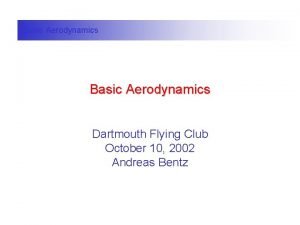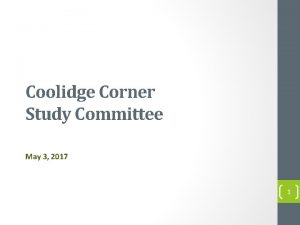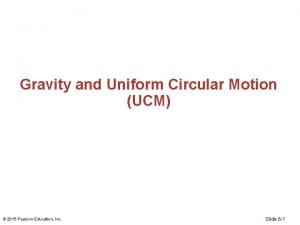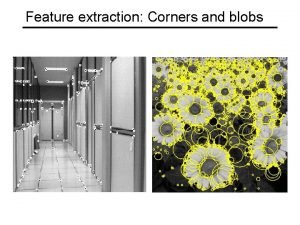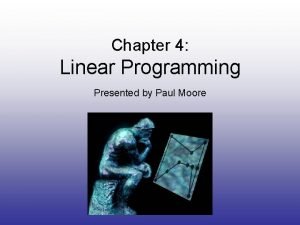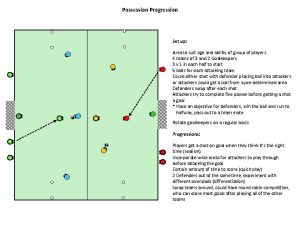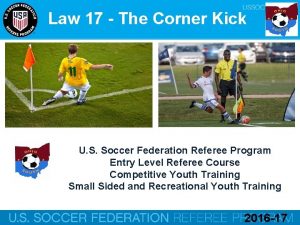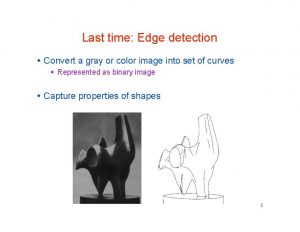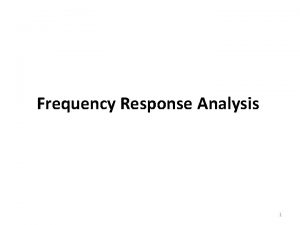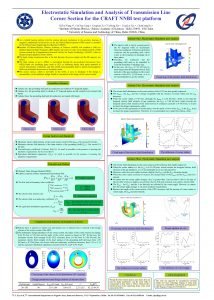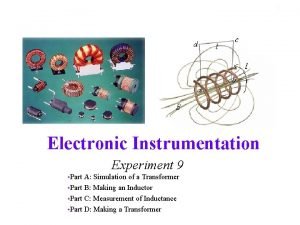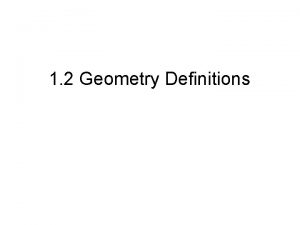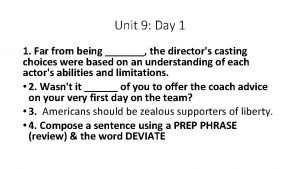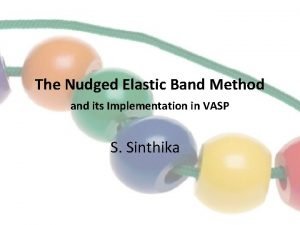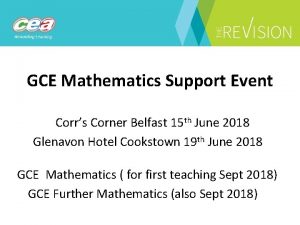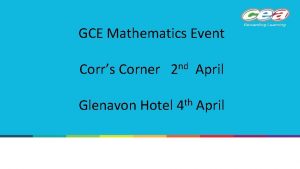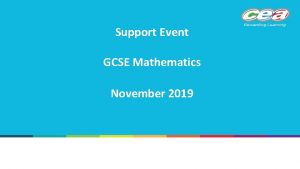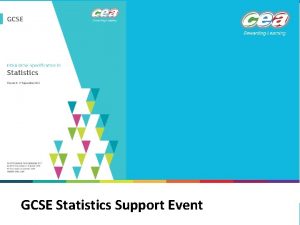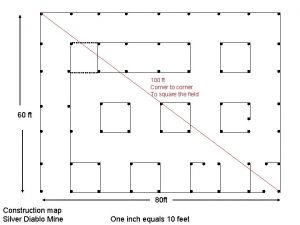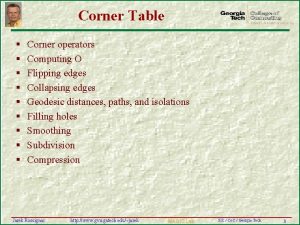GCSE Statistics Support Event Wednesday 23052108 Corrs Corner
















































































































- Slides: 112

GCSE Statistics Support Event Wednesday 23/05/2108 Corr’s Corner Hotel 9. 30 to 15. 30

Education Manager: Michael Mc. Enery mmcenery@ccea. org. uk 02890261200 ext 2170 Subject Support Officer: Nuala Tierney ntierney@ccea. org. uk Chair of Examiners: Ruth Crooks Chief Examiner: Darren Owens Principal Examiners: James Mc. Auley, Conor Sweeney, Brenda Crossen


Proposed Amendments to Specification use simple cases of hypothesis testing using H 0 and H 1 notation, including knowledge of one- and two-tailed tests; page 14 of specification These amendments are with CCEA Regulator and awaiting decision. Microsite will inform you of decision before September 2018. use simple cases of hypothesis testing using Ho and H 1 notation, including knowledge of one- and two-tailed tests; and This has been removed as the level of complexity of this topic is too advanced for this course and is not in keeping with the spirit of this specification. This is not included in the comparable specifications for AQA and Edexcel. The Df. E guidance on this topic suggests that it should be covered at A 2. demonstrate understanding of the binomial distribution as a commonly used model for experiments; This has been included to replace hypothesis testing to provide an example of a probability distribution for a discrete random variable to complement the Normal distribution which is already included. use binomial expansions to calculate probabilities; As above. The binomial distribution as a model

Access to Resources – C 2 k Fronter Room Send details to mmcenery@ccea. org. uk https: //fronter. com/c 2 kschools/main. phtml

Session 1 The Statistical Problem Solving Process

The timeline can be accessed from the following link: http: //www. statslife. org. uk/images/pdf/timeline-of-statistics. pdf


• The RSS rebranded in 2014 when the current logo and strapline was developed. • The reason for changing is that we wished to have a brand that spoke to the important role that statistics and data play in everyone’s lives, and an identity that reflected what the Society is today: professional, modern and inclusive.

The 1857 RSS logo

The RSS logo One of the original aims of the Society was to present statistical facts for others to interpret hence the original badge of the wheatsheaf with the latin motto "aliis exterendum" which translates as "to be threshed by others". This purist approach of presenting statistics without interpretation was soon found to be untenable and the motto was dropped in 1857 when the wheatsheaf was also tidied up. The First 100 Years: 1834 -1934 I. D. Hill JRSS Series A (General), Vol. 147, No. 2 (1984), p. 133 Explanation from the archivist for RSS, The Royal Statistical Society www. rss. org. uk

Statistical problem solving • Posing a question • Planning • Collecting data • Processing representing and Analysing data • Discussing and Interpreting results • Communicating in a variety of forms • Evaluating

GCSE Statistics • Understand use the statistical problem solving process. • Appreciate the use of Statistics in real life Synoptic – seeing things together …

The statistical problem solving process Real world Statistical world

The statistical problem solving process Statistical world

The statistical problem solving process Real world

The statistical problem solving process Real world and Statistical modelling

Subject-specific skills • Content skills and • Process skills • Statistical techniques and • Statistical thinking

Subject-specific skills • Using and applying standard statistical techniques • Interpreting and reasoning statistically • Addressing statistical problems by using the statistical enquiry cycle

Using and applying standard statistical techniques • Collecting and representing data • Calculating summary statistics and calculating probabilities • Accurately recalling appropriate facts, terminology, definitions and procedures • Using and interpreting appropriate notation correctly

Interpreting and reasoning statistically • Interpreting statistical information and results in the context of the given problem • Reasoning statistically to draw conclusions from statistical information • Communicating findings accurately • Making deductions and inferences

Addressing statistical problems using the statistical enquiry cycle • Assessing the appropriateness of statistical methodologies • Assessing the appropriateness of the conclusions drawn • Translating a real world problem into a series of statistical processes • Critically evaluating a given way of presenting information • Evaluating methods used and results obtained in the context of the given problem • Evaluating solutions to identify how they may have been affected by assumptions made.

Assessment Objectives • Demonstrate knowledge and understanding, using appropriate terminology and notation, of standard techniques used to Collect and represent data Calculate summary statistics and probabilities • Interpret statistical information and results in context and reason statistically to draw conclusions • Assess the appropriateness of statistical methodologies and the conclusions drawn through the application of the statistical enquiry cycle.

Becoming confident with Statistics Subject-specific skills • Content skills and Process skills • Statistical techniques and Statistical thinking

Becoming confident with Statistics • Every Statistics lesson is an opportunity to develop Statistical Techniques • Every Statistics lesson is an opportunity to develop Statistical Thinking § Statistical problem solving process § Statistics in real-life

Statistics in real-life The timeline can be accessed from the following link: http: //www. statslife. org. uk/images/pdf/timeline-of-statistics. pdf

Timeline of Statistics

Session 2 Specification Guidance

Planning Communicating and evaluating Statistical Enquiry Cycle Discussing and interpreting Data collection Processing, representing and analysing data

Assessment Objectives AO 1 demonstrate knowledge and understanding, using appropriate terminology and notation, of standard statistical techniques used to: collect and represent data; and calculate summary statistics and probabilities; 55% AO 2 interpret statistical information and results in context and reason statistically to draw conclusions; 25% AO 3 assess the appropriateness of statistical methodologies and the 20% conclusions drawn through the application of the statistical enquiry cycle.

AO Weightings 55% OVERALL 25% 60% Unit 1 25% 50% Unit 2 0% 10% 20% 15% 25% 30% 40% AO 1 50% AO 2 AO 3 60% 25% 70% 80% 90% 100%

AO Example: Pictogram The pictogram shows the number of pupils absent each day during one week. KEY: Monday Tuesday Wednesday Thursday Friday = 2 pupils

Brief Outline of Content 1. Planning and data collection 2. Data organisation 3. Diagrams 4. Calculations 5. Probability 6. Special distributions

Planning and Data Collection 1. Questions and hypotheses 2. Variables, data and data sources 3. Sampling 4. Obtaining data: experiment, survey, etc 5. Problems: outliers, non-response, etc

Questions and Hypotheses QUESTION HYPOTHESIS Does more revision result in a better mark? There is a positive correlation between the number of hours spent on revision and the mark in the test. Is the weather better at the coast The average number of hours of than inland? sunshine is greater at the coast than inland. Is GCSE Statistics worth doing? Those who have GCSE Statistics get better A-Level results than those who don’t.

Simple Random Sample

Simple Random Sample

Simple Random Sample

Simple Random Sample

Simple Random Sample

Systematic Sample

Systematic Sample

Systematic Sample

Systematic Sample

Stratified Sampling Sample Population

Cluster Sampling Theoretical structure of the Population

Cluster Sampling Actual structure of the Population

Cluster Sampling Select one cluster as the sample

Data Organisation 1. Tally chart 2. Frequency table 3. Grouped frequency table 4. Two-way table 5. Venn diagram 6. Stem and leaf diagram

Venn Diagram Even Prime 5 4 2 6 3 1

Venn Diagram Even 8 6 4 64 9 Square 27 1 Cube

Diagrams 1. Pictogram 8. Cumulative frequency 2. Bar chart 9. Box plot 3. Compound bar chart 10. Scatter diagram 4. Multiple bar chart 11. Time series 5. Pie chart 12. Control chart 6. Comparative pie chart 13. Population pyramid 7. Histogram 14. Choropleth map

Bar Charts Compound (stacked) Multiple (grouped) Frequency or Percentage A B C X Y Z

Comparative Pie Chart r R A B C D

Histogram Frequency On Foundation Tier, the class widths will be equal so knowledge of frequency density is not required. Length (cm)

Histogram Frequency Density On Higher Tier, the class widths may be unequal so frequency density is required. Length (cm)

Cumulative Frequency 60 60 50 50 40 40 30 30 20 20 10 10 0 0 15 20 25 30 35 40 45 50

Box Plot LQ Smallest Value 25% 50% Median 25% UQ Largest Value 25% 50%

Scatter Graphs y Response Variable A line of best fit should start and end at the first and last points. Explanatory Variable x

Time Series 90 80 70 Sales (£ 000) 60 50 40 30 20 10 0 Q 1 Q 2 Q 3 Year 1 Q 4 Q 1 Q 2 Q 3 Year 2 Q 4 Q 1 Q 2 Q 3 Year 3 Q 4

Control Chart Upper action Line Upper warning line Target line Lower warning line Lower action Line 1 2 3 4 5 6 7 8 Sample Number

Control Chart Upper action Line Upper warning line Process is under control Target line Lower warning line Lower action Line 1 2 3 4 5 6 7 8 Sample Number

Control Chart Upper action Line Upper warning line Target line Lower warning line Lower action Line 1 2 3 4 5 6 7 8 Sample Number

Control Chart Upper action Line Upper warning line Process needs checked Target line Lower warning line Lower action Line Process needs checked 1 2 3 4 5 6 7 8 Sample Number

Control Chart Upper action Line Upper warning line Target line Lower warning line Lower action Line 1 2 3 4 5 6 7 8 Sample Number

Control Chart Process is out of control Upper action Line Upper warning line Target line Lower warning line Lower action Line Process is out of control 1 2 3 4 5 6 7 8 Sample Number

Control Chart Upper action Line Upper warning line Target line Lower warning line Lower action Line 1 2 3 4 5 6 7 8 Sample Number

Population Pyramid 80 + 70 – 80 60 – 70 50 – 60 40 – 50 30 – 40 20 – 30 10 – 20 0 – 10 MALE FEMALE

Choropleth Map

Choropleth Map

1. 2. 3. 4. 5. 6. 7. 8. 9. Calculations Mean, mode, median, range, geometric mean Median, quartiles, IQR Deciles and percentiles Moving averages Standard deviation Index numbers: simple, chain base, weighted Standardised scores Product moment Spearman’s rank

Percentiles 60 50 40 30 20 17 10 0 15 20 25 30 P 34 35 40 45 50

Standard Deviation Any correct formula/method may be used. Candidates can use calculator functions to calculate but should know which button(s) to use. Knowledge of s 2 as an estimate for 2 is not needed and should not be used.

Simple Index Numbers Year 2012 2014 2015 2016 2017 Price 38 p 39 p 44 p 48 p 47 p 51 p Simple Index No. 100 102. 6 115. 8 126. 3 123. 7 134. 2 = 123. 7 Price has increased by 23. 7% since 2012.

Chain Base Index Numbers Year 2012 2014 2015 2016 2017 Price 38 p 39 p 44 p 48 p 47 p 51 p Chain base index No. 100 102. 6 115. 8 126. 3 123. 7 134. 2 = 97. 9 Price has decreased by 2. 1% since 2015

Probability 1. The probability scale 2. Relative frequency as an estimate 3. Equally likely outcomes 4. Expected frequency 5. Risk 6. Venn diagrams 7. Tree diagrams

Absolute Risk

Distributions 1. The binomial distribution as a model 2. The normal distribution as a model

Session 3 Guidance on Unit 2 (pre-release)

Unit 2 is designed to give candidates the opportunity to apply their knowledge of the Statistical Enquiry Cycle to published statistics in a prescribed context. This is a unique feature of the CCEA GCSE Statistics. OVERALL 55% Unit 1 25% 60% Unit 2 25% 50% 0% 10% 20% 15% 25% 30% 40% AO 1 50% AO 2 AO 3 60% 25% 70% 80% 90% 100%

Unit 2 The Unit 2 examination will test candidates’ knowledge and understanding of the components of the Statistical Enquiry Cycle as applied to the prescribed context. Contexts will be realistic, current and local. Pre-release material will be uploaded to the GCSE Statistics microsite in September for the forthcoming examination. Candidates will not need to memorise any information from the prerelease material and will not need a copy of it in the examination.

Unit 2 is not an investigation, nor will the entire paper be based on the pre-release material. Questions will fall into one of three categories: o directly related to pre-release; o inspired by or indirectly related to pre-release; o not connected to pre-release.

Example

Session 4 Foundation Tier New Topics

Foundation Tier ‘New’ Topics • • • Correlation and Correlation coefficients Data sets Sampling Control Charts Simple index numbers

Statistics in the news Franz H. Messerli, M. D.

The Vending Machine

Correlation and Correlation Coefficients The Vending Machine Chocolate Bar Option 40 Option 42 Option 44 Option 45 Option 46 Option 47 Option 50 Option 51 Option 52 Option 53 Option 54 Option 55 Option 56 Option 57 Option 60 Option 63 Weight (g) 48 51 50 40 46 55 48 38 43 36 42 54 45 43 36 49 Energy (kcal) 245 228 248 203 248 186 236 198 204 194 229 278 240 228 199 249 Manufacturer 1 Manufacturer 2 Manufacturer 3 Manufacturer 2 Manufacturer 4 Manufacturer 2 Manufacturer 1 Manufacturer 4 Manufacturer 4 Price £ 0. 80 £ 2. 00 £ 0. 80 £ 0. 95 £ 0. 90 £ 0. 95

Correlation and correlation coefficients Chocolate bars 300 250 200 Energy (kcal)150 100 50 0 0 10 20 30 Weight (g) 40 50 60

Correlation and Correlation coefficients Chocolate bars 300 250 200 Energy (kcal)150 100 50 0 0 10 20 30 Weight (g) 40 50 60

Correlation and Correlation coefficients Chocolate bars 300 250 200 Energy (kcal)150 100 50 0 0 10 20 30 Weight (g) 40 50 60

Correlation and Correlation coefficients Weight (g) Energy (kcal) 48 245 51 228 50 248 40 203 46 248 55 186 48 236 38 198 43 204 36 194 42 229 54 278 45 240 43 228 36 199 49 249 r= 0. 549220635 Weight (g) 48 51 50 40 46 48 38 43 36 42 54 45 43 36 49 Energy (kcal) 245 228 248 203 248 236 198 204 194 229 278 240 228 199 249 r= 0. 889324614

Data sets • • • The Vending Machine Chocolate bars The Melmount Medical Centre Quality Irish Potatoes Crisps (Multipacks) Food Hampers

Sampling

Control Charts • The graph below shows values within the action lines. No action is required. It is not possible for every sample mean to be exactly on target.

Control Charts The graph below shows the quality assurance chart for a soft drink company. They measure a sample of cans every half hour and record the sample median on the chart. The target median is set at 332 ml to ensure the capacity doesn’t drop below the stated amount (330 ml).

Simple index numbers • For example, for the data in the table below, calculate the simple price indices for 2015 and 2016 relative to 2014 (the base period) These index numbers show that: prices in 2015 increased by 5% relative to 2014 prices in 2016 increased by 8. 9% relative to 2014

Session 5 New Topics for Higher Tier

‘New’ Topics 1. Cumulative frequency diagrams (discrete data) 2. Use of the geometric mean 3. Correlation and regression 4. Absolute and relative risk 5. The binomial distribution

Session 6 Cross-curricular Themes Thinking skills and Personal Capabilities

• Cross-Curricular Skills § Communication skills § Using Mathematics skills § Using ICT skills • Thinking Skills and Personal Capabilities § Self-Management skills § Working with Others Skills § Problem Solving skills

The statistical problem solving process Students should be able to understand use the statistical problem-solving process by: • planning; • collecting data; • processing, representing and analysing data; • discussing and interpreting results; and • communicating in a variety of forms such as written, tabular or diagrammatic.

Communication Skills • Written Communication Skills § Reading § Writing • Oral Communication Skills § Listening § Presenting

Not just literacy but Statistical literacy True ease in writing comes from art, not chance, as those move easiest who have learn’d to dance. Alexander Pope 1688 – 1744 The limits of my language mean the limits of my world. Ludwig Wittgenstein 1889 – 1951

Using Mathematics • Understand use positive and negative numbers of any size in practical contexts. • Carry out statistical calculations with numbers of any size in practical contexts, to a suitable degree of accuracy.

Using Mathematics • Understand use equivalences between fractions, decimals and percentages. • Understand, use and calculate ratio and proportion, including problems using scale.

Using Mathematics • Understand use statistical formulae. § § § § Calculating the angle for a sector in a pie chart. Frequency density for a histogram Calculation of arithmetic mean Range Interquartile range Probability 4 point moving averages

Using ICT • Scientific calculators • Spreadsheets • The Internet

Use techniques such as names drawn from a hat, dice, cards, random number lists or random numbers from a calculator or spreadsheet to select a random sample. Collect data using methods such as experiment, data logging, survey, reference, census, simulation, questionnaires and/or observation and demonstrate understanding of when these methods are appropriate. Calculate a product moment correlation coefficient using calculator functions or spreadsheet functions and demonstrate knowledge that correlation coefficients are used when the data are random on random. Calculate standard deviation using a formula or calculator functions for a small set of ungrouped data or large set of grouped data and interpret standard deviation as a measure of spread. Use and interpret a given line of best fit for a scatter diagram including outputs from software.

• Working with others § Interpersonal skills § Working in a team § Leading others • Self-management § Aiming High § Remaining positive

Problem Solving skills • Statistical problem solving § Creativity § Problem Solving • Ask Questions § Why? Who? What? Where? When? How? Which?

Problem solving skills A data rich world - Knowledge Economy Human Endeavour – ‘Curiosity based research’ Beyond the Timeline …?
 Caddy corner
Caddy corner The corrs kieran kiely
The corrs kieran kiely Ccea thinking skills and personal capabilities
Ccea thinking skills and personal capabilities Near miss root cause analysis
Near miss root cause analysis Simple event and compound event
Simple event and compound event Independent or dependent
Independent or dependent Independent event vs dependent event
Independent event vs dependent event Swot analysis event management
Swot analysis event management Language features
Language features Language features of news item
Language features of news item Rare event rule for inferential statistics
Rare event rule for inferential statistics What is the rare event rule
What is the rare event rule Rare event rule statistics
Rare event rule statistics Introduction to statistics what is statistics
Introduction to statistics what is statistics Monday tuesday wednesday thursday friday calendar
Monday tuesday wednesday thursday friday calendar Wednesday evening prayer
Wednesday evening prayer Wednesday seminar
Wednesday seminar Wednesday 9 january 2019 chemistry mark scheme
Wednesday 9 january 2019 chemistry mark scheme Michelle hansberry
Michelle hansberry How to write wednesday
How to write wednesday Good morning happy february
Good morning happy february Monday is my favorite day of the week
Monday is my favorite day of the week Skinny wednesday
Skinny wednesday Flmsg download
Flmsg download Wednesday saturday
Wednesday saturday Happy wednesday
Happy wednesday Happy wednesday march
Happy wednesday march Monday tuesday wednesday thursday friday saturday sunday
Monday tuesday wednesday thursday friday saturday sunday English class is wednesday
English class is wednesday Wednesday writing prompts
Wednesday writing prompts Wednesday bellwork
Wednesday bellwork Thursday bellringer
Thursday bellringer Marvelous monday terrific tuesday wonderful wednesday
Marvelous monday terrific tuesday wonderful wednesday Enum days sunday monday=5 tuesday=6 wednesday=7
Enum days sunday monday=5 tuesday=6 wednesday=7 Wednesday bellwork
Wednesday bellwork Wednesday good morning
Wednesday good morning Thursday prayer images
Thursday prayer images Wednesday bell ringer
Wednesday bell ringer Wednesday syllables
Wednesday syllables Borwick hall outdoor education centre
Borwick hall outdoor education centre Happy wednesday
Happy wednesday Happy wednesday
Happy wednesday Thursday prayer
Thursday prayer Fe exam results wednesday
Fe exam results wednesday Wednesday phonics
Wednesday phonics Tuesday-sunday
Tuesday-sunday Monday=621 tuesday=732 wednesday=933
Monday=621 tuesday=732 wednesday=933 Monday=621 tuesday=732 wednesday=933
Monday=621 tuesday=732 wednesday=933 Wednesday lo
Wednesday lo Wednesday at 6
Wednesday at 6 Wednesday two of the key
Wednesday two of the key Wednesday
Wednesday Major details and minor details
Major details and minor details Properties of a square based pyramid
Properties of a square based pyramid Mla top left corner
Mla top left corner Corner prediction
Corner prediction Corner window displays
Corner window displays Corner grounded delta
Corner grounded delta Positive corner fed room
Positive corner fed room In your mates corner
In your mates corner Be in your mates corner
Be in your mates corner Mla format upper left hand corner
Mla format upper left hand corner Mla format
Mla format Field hockey corners
Field hockey corners The girl's father sat in a corner punctuate the sentence
The girl's father sat in a corner punctuate the sentence What is a infrence
What is a infrence Bioremediation is a triple corner process
Bioremediation is a triple corner process Conflict corner
Conflict corner Unoccupied bed procedure
Unoccupied bed procedure Engineering corner for inspection
Engineering corner for inspection Corner weld
Corner weld Classroom management toolkit
Classroom management toolkit Coffin corner aviation
Coffin corner aviation Sanders corner elementary school
Sanders corner elementary school Be in your mates corner
Be in your mates corner Agri dbt workflow
Agri dbt workflow The calvin coolidge corner
The calvin coolidge corner Randomness probability and simulation
Randomness probability and simulation Left corner parsing
Left corner parsing Bevel groove weld symbol
Bevel groove weld symbol Coders corner
Coders corner Electric portable pickup crane
Electric portable pickup crane Grammar corner
Grammar corner Chin raiser
Chin raiser Apparent weight formula
Apparent weight formula Go straight ahead and turn right
Go straight ahead and turn right Moravec corner detector
Moravec corner detector Corner blob
Corner blob Miss chris spanking
Miss chris spanking Corner point principle
Corner point principle American corner abidjan
American corner abidjan 4 corner debate
4 corner debate Golden goal
Golden goal Element of poetry
Element of poetry Corner kick in soccer
Corner kick in soccer Corner detection
Corner detection Corner detection
Corner detection Phase margin gain margin
Phase margin gain margin A heater is placed under one corner
A heater is placed under one corner Corner simulation
Corner simulation Antenna magus
Antenna magus Wood joint drawing
Wood joint drawing Gregory is my beautiful gray persian cat
Gregory is my beautiful gray persian cat Chicago style title page
Chicago style title page Thinking corner
Thinking corner Reveal in brick masonry
Reveal in brick masonry 4 corner debate
4 corner debate Corner frequency
Corner frequency Collinear symbol geometry
Collinear symbol geometry Straight front window display
Straight front window display The teacher decided to a corner of the classroom
The teacher decided to a corner of the classroom Aim of descriptive writing
Aim of descriptive writing Corner cutting
Corner cutting
